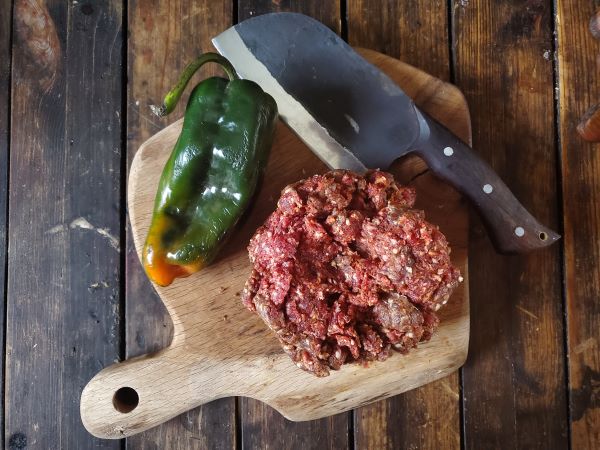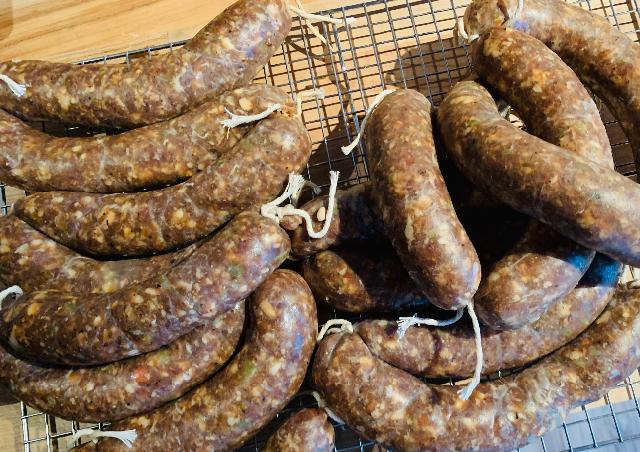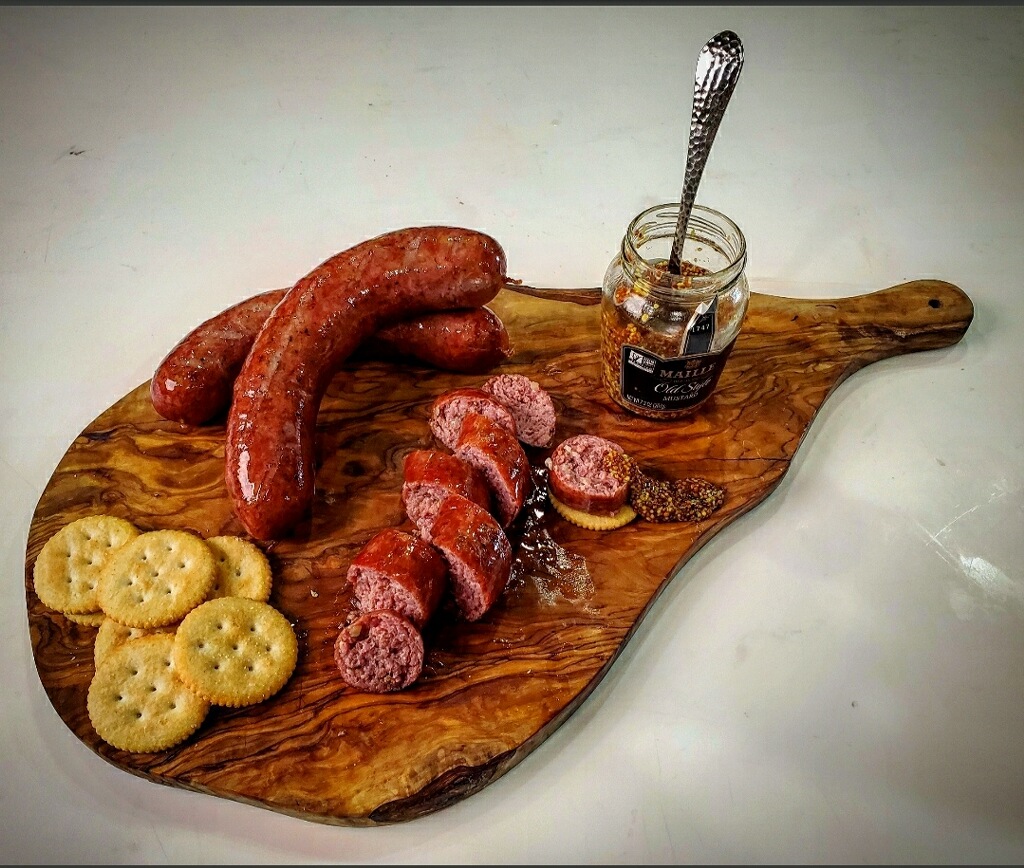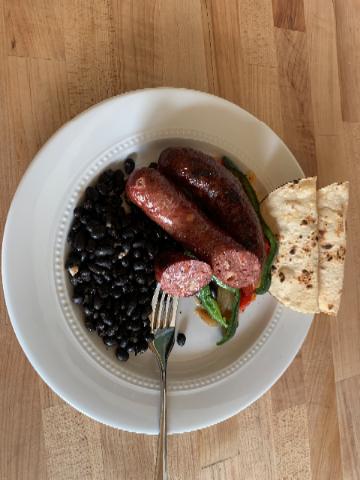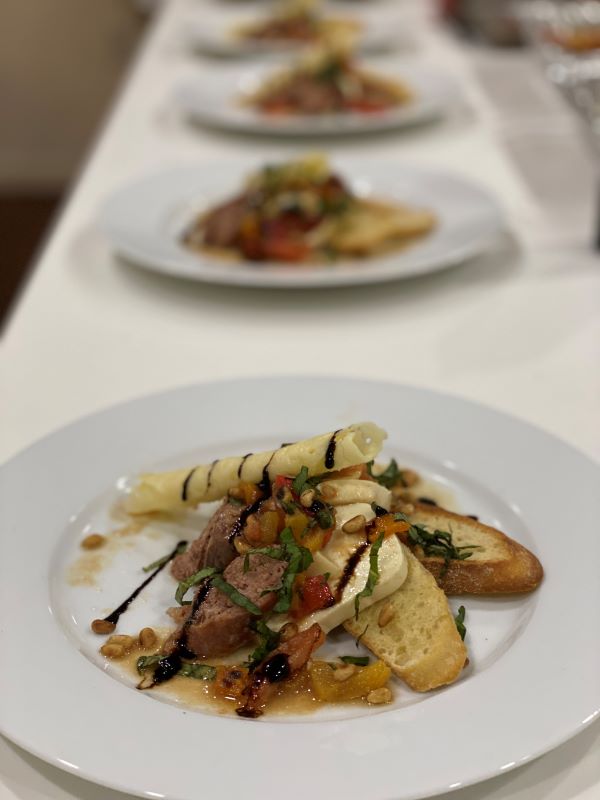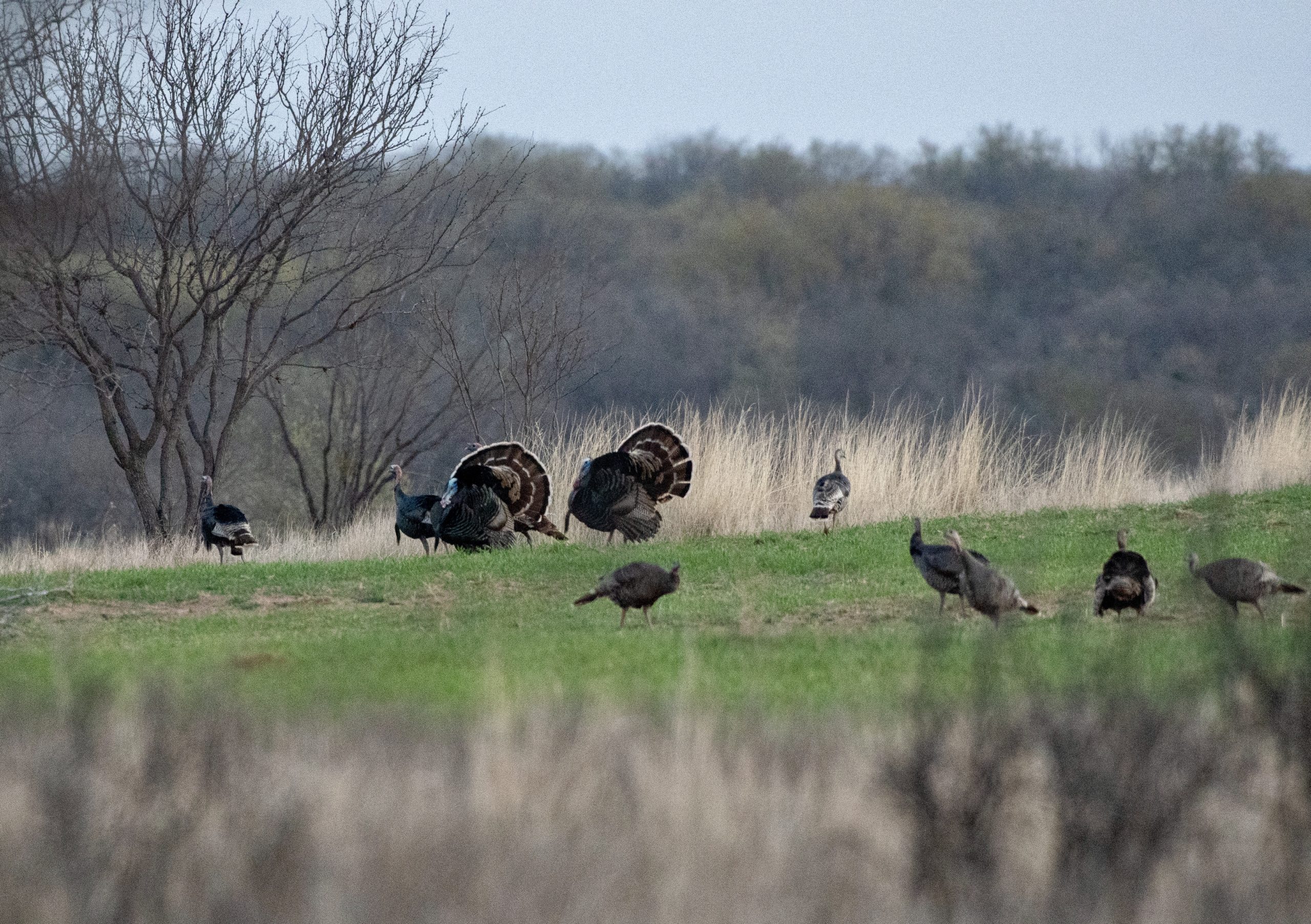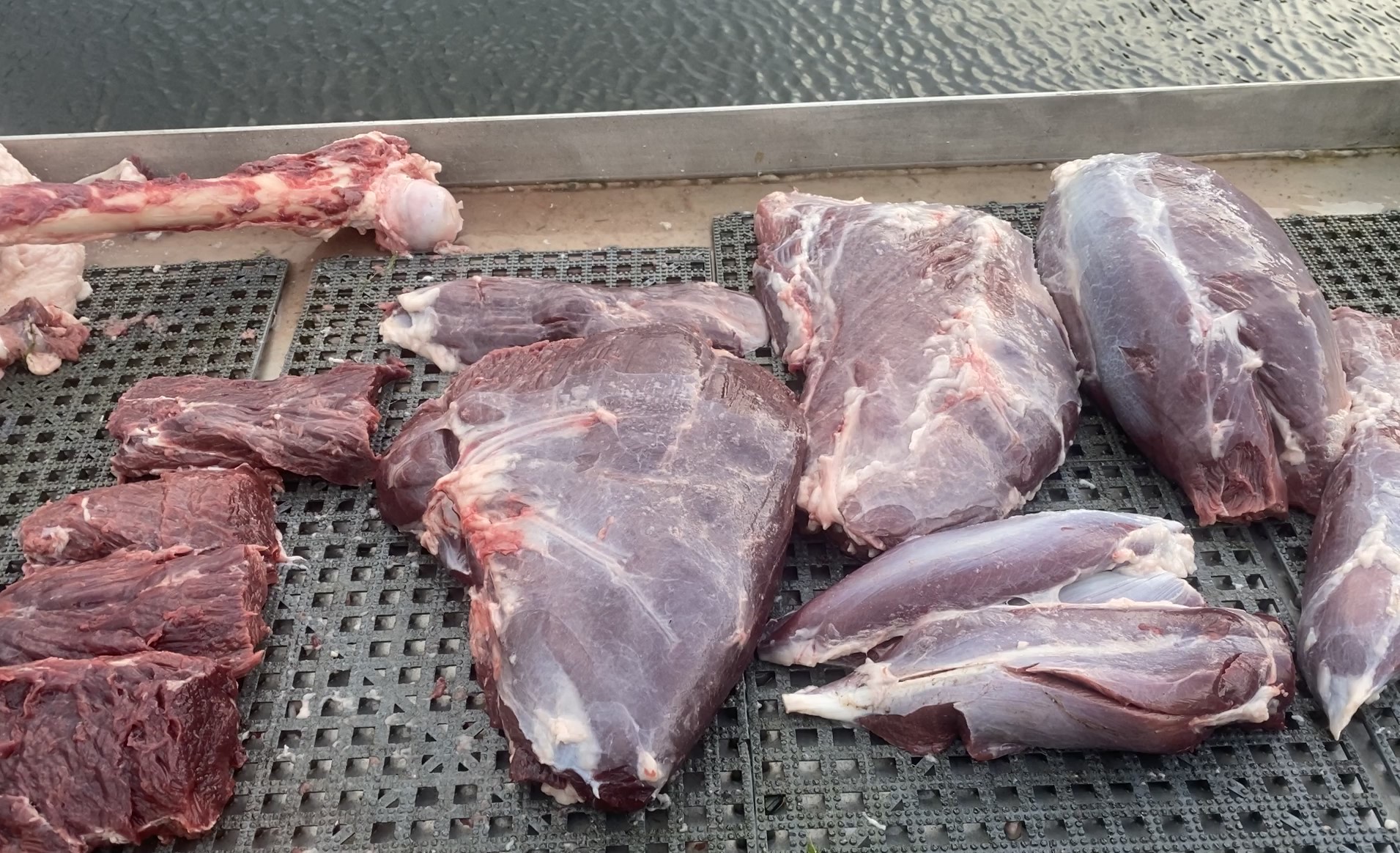Looking for a fresh wild game sausage recipe? Fresh game sausage is an excellent menu choice for hunting camp, especially if you have time in camp to cook a nice hot breakfast. When we hunt the backcountry and carry everything in on our backs we don’t always get a nice hot sausage and egg breakfast. When sharing camp with your hunting buddies, and sharing meat harvested together, why not share the expense of the grinding equipment and sausage making equipment as well? You guys and gals hunt together, what better way to enjoy your friendship and the fruits of your hunt than to get together after the season and have a grinding sausage party.
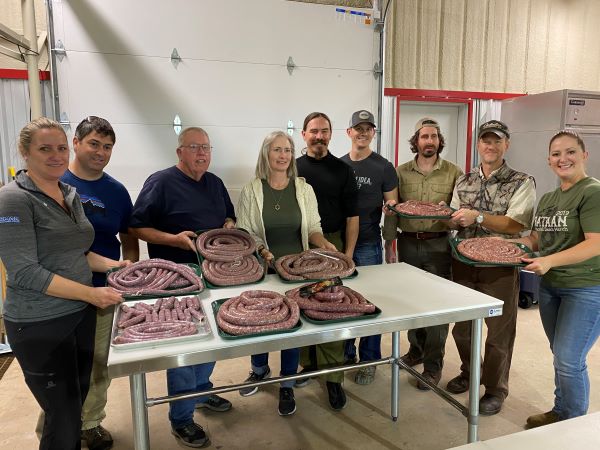
Preparing game sausages is an excellent way to utilize the less tender cuts and usable trim. I write “usable trim” because I cannot emphasize enough that you only want to use quality wholesome trim. Don’t try to use or save bloodshot meat, or trim that was exposed to bladder spillage, or trim that is all dried up from aging. You cannot make poor quality meat better by processing or cooking it. Quality in equals quality out. Garbage in-garbage out.
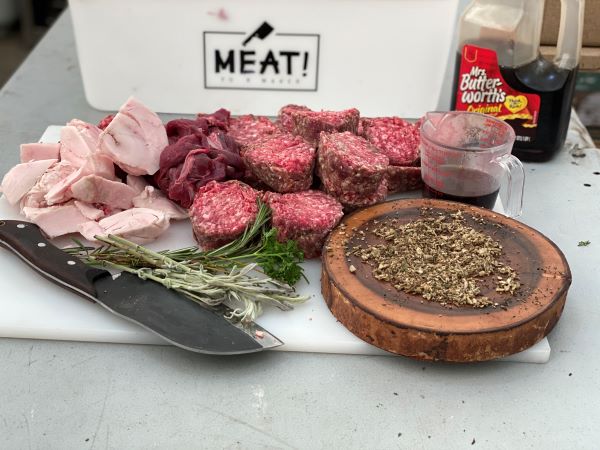
Fresh sausage is a versatile menu item, it can be prepared for any meal period, from the raw state on a grill, in a frying pan, or in an oven or Dutch oven. Sausages can be prepared ahead of time and refinished in sauces, stews, etc.
The reason why I keep referring to “fresh” sausage is that this classification of sausages has no cure in it. Fresh sausages are breakfast sausage, hot and sweet Italian sausage, onion sausage, there is no “pink” curing salts because these sausages are not smoked, cured, or fermented for long periods of time, they are cooked fresh or from the frozen state. 
The cured sausages have cures added to prevent the growth of harmful microorganisms while smoking and curing. Uncooked sausages have cures that are time released while fermentation takes place. I will refer only to fresh sausages in this column while some of the preparation and sanitation methods overlap for all sausage making.
The most important factor when grinding meat and preparing sausages is to use the highest standard of sanitation. The second most important factor is to utilize quality meat. You cannot use poor quality and expect to get something good out of it. When using dangerous equipment such as grinders always incorporate the highest standard of safety as well. As an example, always unplug when assembling and disassembling your grinders. When mixing meat by hand always use gloves.
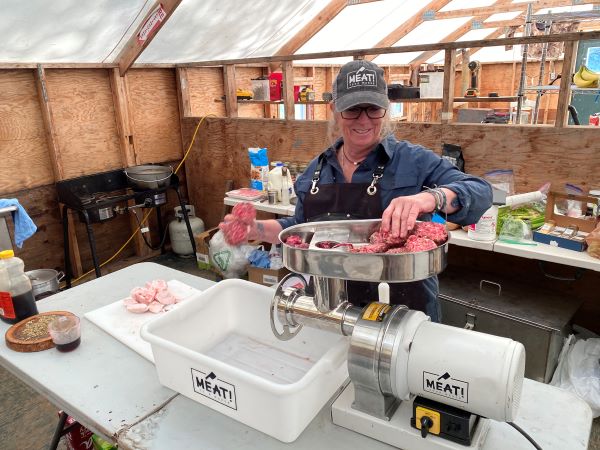
Always use quality meat, keep equipment and meat ice cold. Always keep equipment sanitary and clean. When grinding less tender trim, we expose the meat to cutting boards, knives, hands, grinders, mixers, stuffers, etc. providing an environment for contamination. That’s why 95% of the food borne illness associated with meat is found in ground meats.
Most sausages have approximately 20-30% fat content. When preparing game sausage, we must add fat such as a fatty pork butt, fat back, jowl fat, or bacon. If adding beef fat its best to use cap fat which is the fat off the outer surface of the meat, such as off the strip loin, rib, or round. Beef suet is not the best choice because it makes your sausages have a tallow-like texture as would lamb and deer fat.
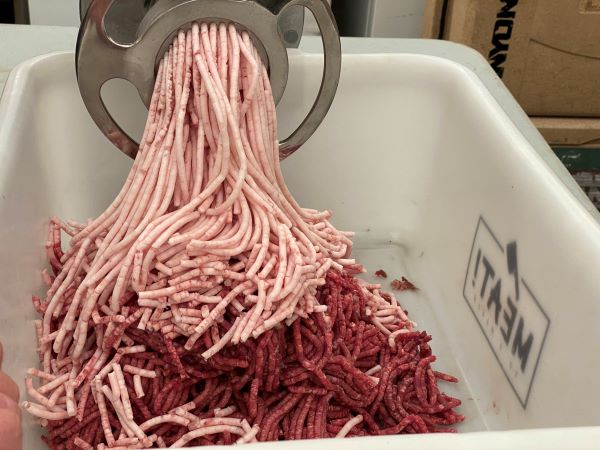
I currently use 70-30 venison to pork butt. This results in a moist flavorful sausage. I don’t like to use a higher ratio because I end up adding oil when cooking the sausage to keep it moist. There are additives to sweeten such as corn syrup, maple syrup, and powdered dextrose. To retain moisture, add powdered milk or soy protein. Of course the addition of ice water blends the seasonings, keeps meat cold, moistens the casings, and adds moisture to the bind. Standard amount is 1 cup ice water to every five pounds of meat.
Fresh sausages can be stored either in bulk, tubes, patties, or stuffed into casings for rings and links. There are a wide variety of casing both natural and synthetic. Natural casings are made from the intestines of sheep, hog, or beef. There are also natural collagen casings made from the hides of beef. All natural casings are edible. Synthetic casings are available as edible and/or non-edible. Both natural collagen and synthetic casing can be colored as well. Fresh natural casings and/or collagen casings are best suited for fresh sausages.
Casing come in a variety of sizes from small 17-19 mm lamb intestines to large non-edible synthetic casing 4-5” in diameter for bologna. Fresh natural casings are usually sold as hanks approximately 100 yards. Collagen casing are sold as dry tubes, sometimes colored or tinted.
Standard 32 -35mm casing for sausage links or rings, usually use about a pound of meat per foot of casing. The smaller the casing the longer per pound, the larger the casings, the shorter per pound.
When using natural casings/hank, they should be soaked, washed, and flushed in fresh cold water. Hanks are usually packed in salt or salted water. Flush well by opening end and running fresh cold water through the entire hank or portion you are using. Once flushed wet the appropriate horn and place onto horn. Always keep the horn and casings moist to prevent drying and sticking. Don’t wet or moisten dry collagen casings unless they are too brittle. Be careful fresh casings can easily knot and create problems.
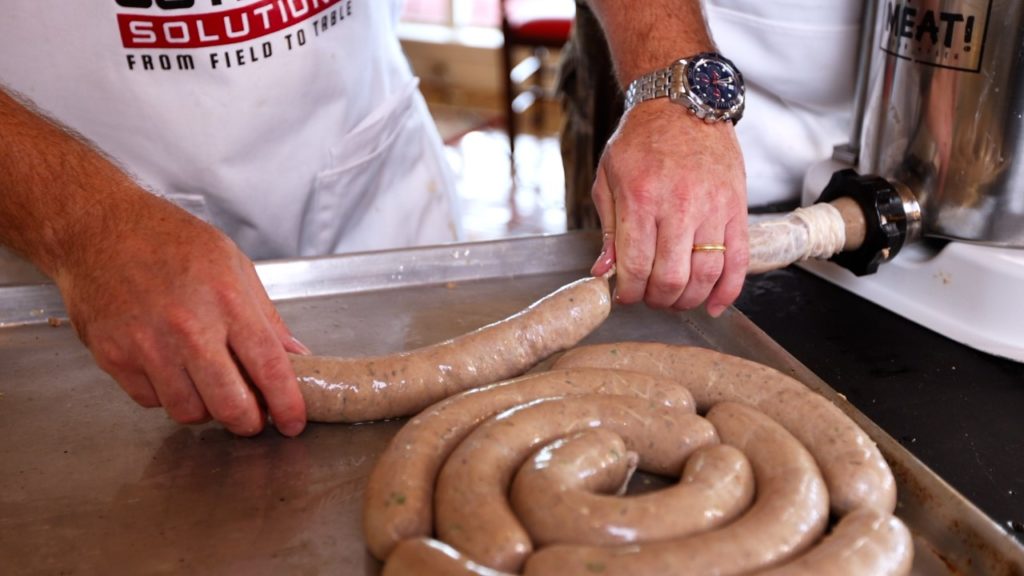
Leave the end of the casing open so when sausage mixture enters the casing it allows air to release so you don’t have large air pockets. Once you get about a foot out of sausage horn you can then tie off. Once the meat has been ground using the appropriate die, add to meat mixer, combines spices together and add to the meat. Add ice water and mix in meat mixer until meat becomes sticky. If you don’t have a meat mixer add the spices and ice water to the second grind, blend well using gloves.
After the meat has been ground, make a small patty and cook for a sample of flavor and texture. Adjust if necessary at this time. After taste test, pack meat into sausage stuffer, trying to eliminate all air pockets. Open air/pressure release valve on the sausage stuffer.
For bulk sausage you can press through sausage stuffer or roll into tubes and freeze as bulk, or prepare into patties.
Preparing sausage links is all about pressure and speed. Start out slow with hand crank until you get a good feel for the speed. Natural sheep and hog casing sometimes blow out the side. This happens to all of us, just tie off and start again. Collagen casings are easy to use, just place the dry casing on the horn and fill. Always keep the filled sausage casings moist. If making links, fill the casings about 75-80% full, this allows room for tying off links. If preparing rings, just let the casing naturally roll into rings as filling. When using natural casings, they will roll into rings automatically because one side of the casing is shorter than the other.
Sausages are extremely versatile, they can be poached, braised in tomato sauce, cooked on grill or broiler, roasted, slow cooked, sautéed, pan broiled, and boiled. Sausages can be used either raw or cooked, as ingredients in other preparations such as Jambalaya or Paella.
There are many pre-made sausage packets available on the market, some include the recipe, spice blends, and the casings while others are just the spice blends for a specific amount of meat.
Usually you can find casings at your local supermarket, butcher, and game processor. Most sporting goods stores now have an outstanding selection of products available as well.
These are pretty reasonable in quality, cost, and time, especially if you don’t have a good selection of spices in your cupboard.
For a fun filled day, gather all your hunting buddies, chip in and get a grinder, mixer, sausage press, and refrigerator. Get together after the hunting season and spend the day making ground game meat and sausages while having a beer and talking about last season and the upcoming season.
All our grinders, mixers, sausage press, sealers are from our partners at Meatyourmaker.com good quality and reasonably priced.
Check out all our recipes and videos for ground meats, sausages, and more at fromfieldtotable.com and let us know what you’re making for dinner!
Good Cooking, Chef Wutsch

